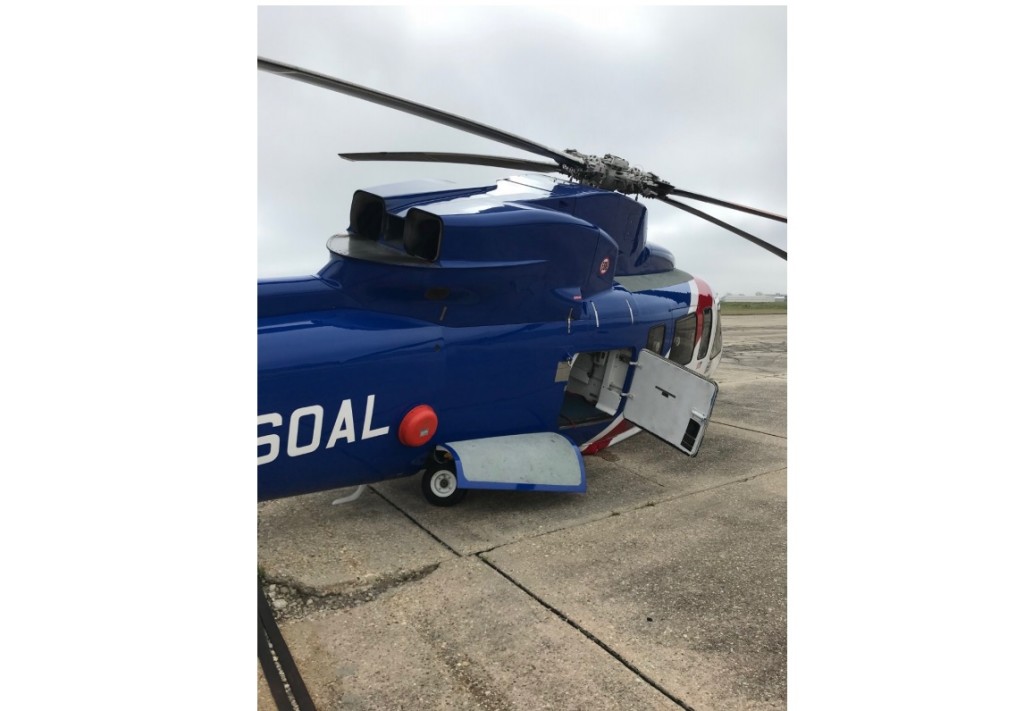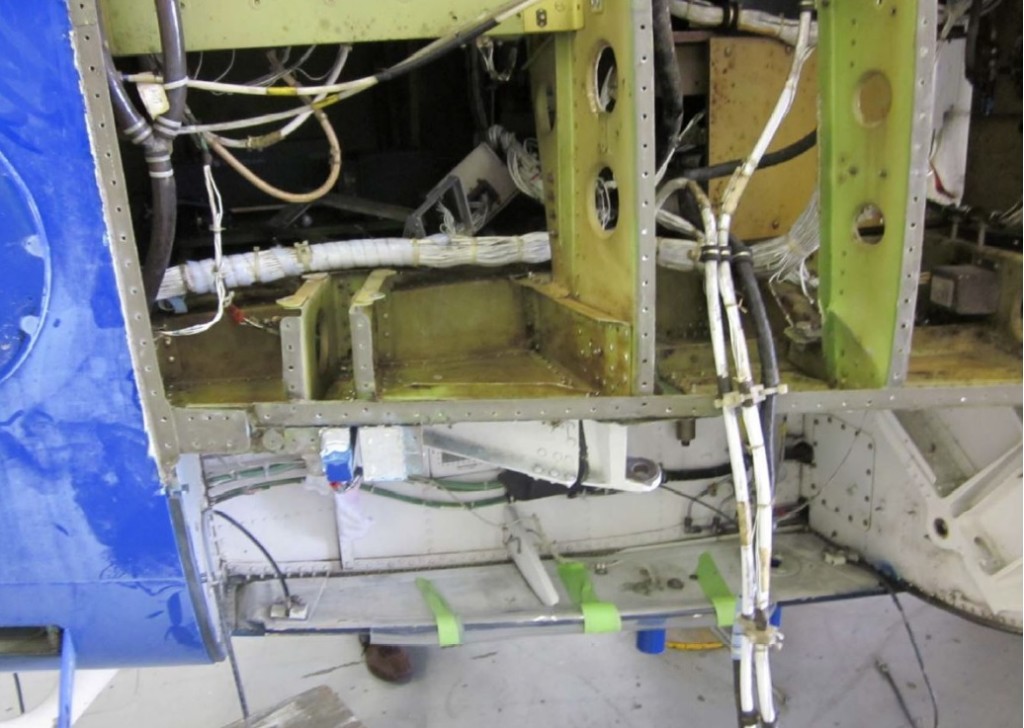S-76C+ MLG Collapsed Due to Pothole
On the 18 February 2018 Bristow US Sikorsky S-76C+ N860AL suffered a landing gear collapse during taxy at Acadiana Regional Airport (ARA), New Iberia, LA. The aircraft was performing an offshore oil and gas flight for Talos Energy with 2 crew and 3 passengers.
The Accident
In their safety investigation report, the US National Transportation Safety Board (NTSB) say:
The pilot reported that, while the copilot was taxiing the wheel-equipped helicopter to the runway for departure, he saw a “bump” on the concrete. The copilot reported that he attempted to stop before the “bump,” which turned out to be a pothole, but the helicopter struck the pothole with the right main landing gear, which collapsed. The pilot and the copilot both reported that the taxi speed was less than 5 knots.
All 5 persons on board escaped uninjured. The NTSB say that:
The helicopter sustained substantial damage to the internal fuselage structure.
The operator’s accident report form describes that this was a “non-maintained but commonly used taxiway/ramp” that was “made up of concrete sections that are approximately 12′ x 12′.”
The NTSB documentation does not discuss why the surface was not previously identified as damaged and there is no follow up with the airport authority. It is relatively unusual for an S-76 to operate from ARA so its just possible it was ground taxing along a route in which skidded helicopters would normally hover taxi and so the degraded paving was not normally an issue. No safety actions are reported.
Probable Cause
The NTSB determined the probable cause to be:
The helicopter’s striking of a pothole while taxiing, which resulted in the right main landing gear collapsing.
Taxonomies of Flight Safety
The NTSB classified this occurrence as an accident as per the following US legal definitions:
830.2 Definitions. As used in this part the following words or phrases are defined as follows:
Aircraft accident means an occurrence associated with the operation of an aircraft which takes place between the time any person boards the aircraft with the intention of flight and all such persons have disembarked, and in which any person suffers death or serious injury, or in which the aircraft receives substantial damage. For purposes of this part, the definition of ‘‘aircraft accident’’ includes ‘‘unmanned aircraft accident,’’ as defined herein.
Substantial damage means damage or failure which adversely affects the structural strength, performance, or flight characteristics of the aircraft, and which would normally require major repair or replacement of the affected component. Engine failure or damage limited to an engine if only one engine fails or is damaged, bent fairings or cowling, dented skin, small punctured holes in the skin or fabric, ground damage to rotor or propeller blades, and damage to landing gear, wheels, tires, flaps, engine accessories, brakes, or wingtips are not considered ‘‘substantial damage’’ for the purpose of this part.
However, in the Bristow annual report for FY2018 (which ended 31 March 2018) the CEO oddly stated that the company “finished FY18 with no Class A or B air accidents” (implying no accidents with >$500k of damage). This is an adaption of a US military designation system, not usually used in civil industry.
UPDATE 28 February 2019: This was the only GOM accident in 2018: Helicopter Ops and Safety – Gulf of Mexico 2018 Update
UPDATE 2 March 2019: The US military are discussing changes to cost of damage based accident definitions.
Background
N860AL was the first Turbomeca Arriel 2S1 powered S-76C+ delivered, to what was then Air Logistics, on 28 April 2003. Almost 15 years later it had flown 9866 flying hours. ARA is an ex-US Navy airfield with an 8,000ft runway and a 5,000ft seaway. The NTSB documentation does not state which taxiway was involved but it is likely to be at the north end of the airport.
UPDATE 12 March 2019: A Bristow Bell 407, N577AL, operated for Talos Energy, was lost shortly after take off from Galliano, LA on 10 March 2019. The pilot and single passenger both died.
Safety Resources
Also see our review of The Field Guide to Understanding Human Error by Sidney Dekker presented to the Royal Aeronautical Society (RAeS): The Field Guide to Understanding Human Error – A Review
- S-92A Collision with Obstacle while Taxying
- UK AAIB Report on Two Ground Collisions
- UPDATE 30 October 2021: RLC B407 Reverses into Sister Ship at GOM Heliport
Aerossurance is pleased to be both sponsoring and presenting at a Royal Aeronautical Society (RAeS) Human Factors Group: Engineering seminar Maintenance Error: Are we learning? to be held on 9 May 2019 at Cranfield University.





Recent Comments